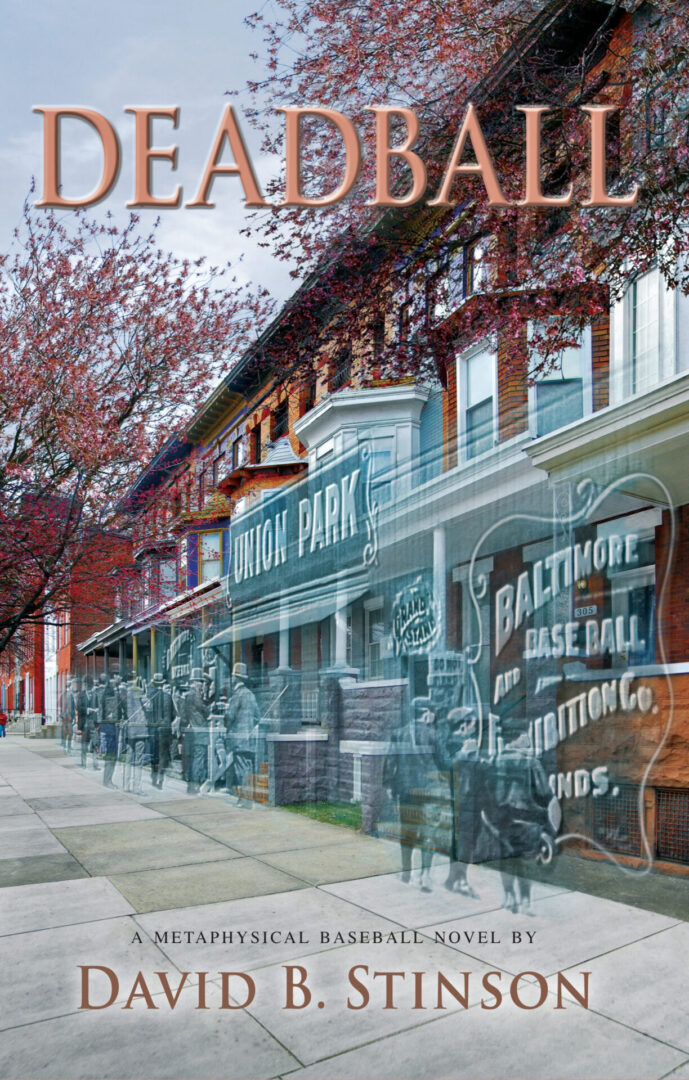The ballpark currently known as Sun Life Stadium was home to the National League Florida Marlins (currently known as the Miami Marlins) from 1993 to 2011. It is located just north of Miami, Florida, at 2269 N.W. 199th Street, in the suburb of Miami Gardens.
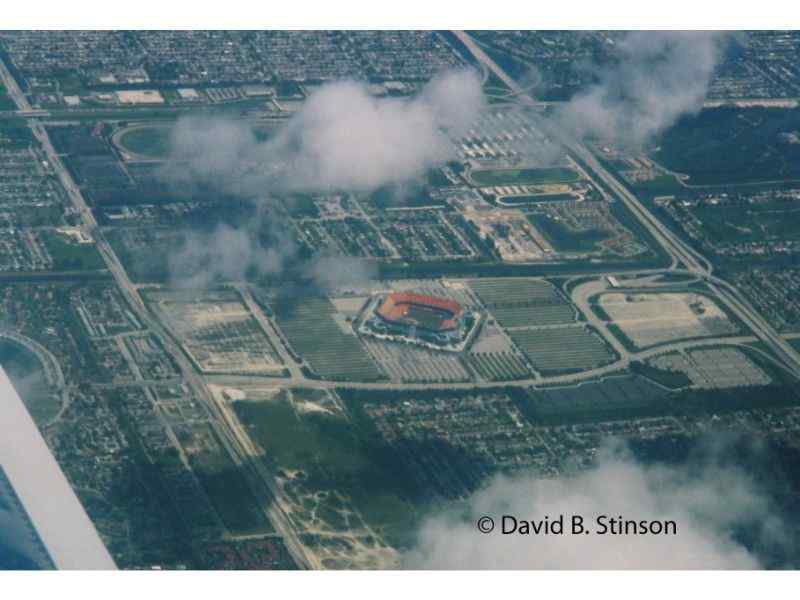
Opened in 1987, and financed by former Miami Dolphins owner Joe Robbie, the ballpark is primarily a football stadium that was adapted for use by Major League Baseball.
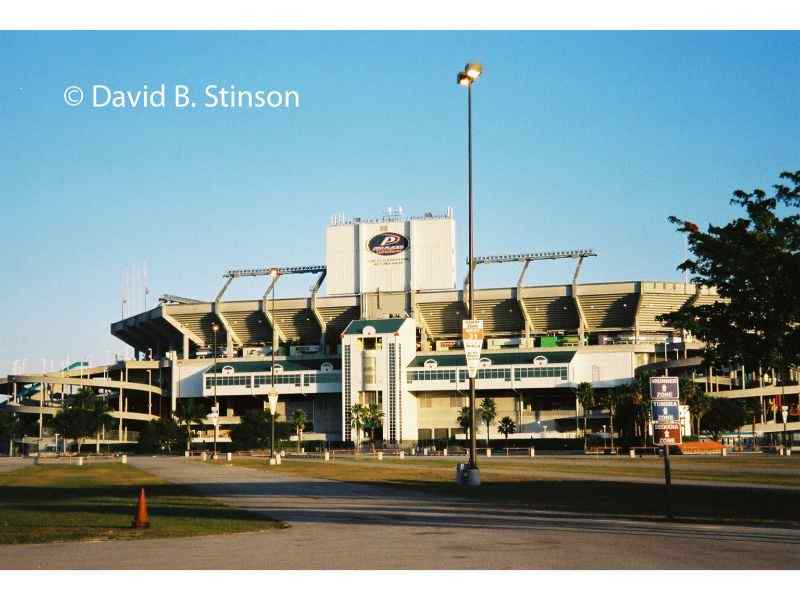
In its 25 plus seasons in existence, the ballpark has undergone several name changes, from Joe Robbie Stadium, to Pro Player Park, to Pro Player Stadium, to Dolphins Stadium, to Dolphin Stadium, to Land Shark Stadium, to Sun Life Stadium.

The Miami Dolphins have called the stadium home since 1987. Talks between team owners and city officials may lead to significant renovations of the stadium in the next few years, including the addition of a roof.
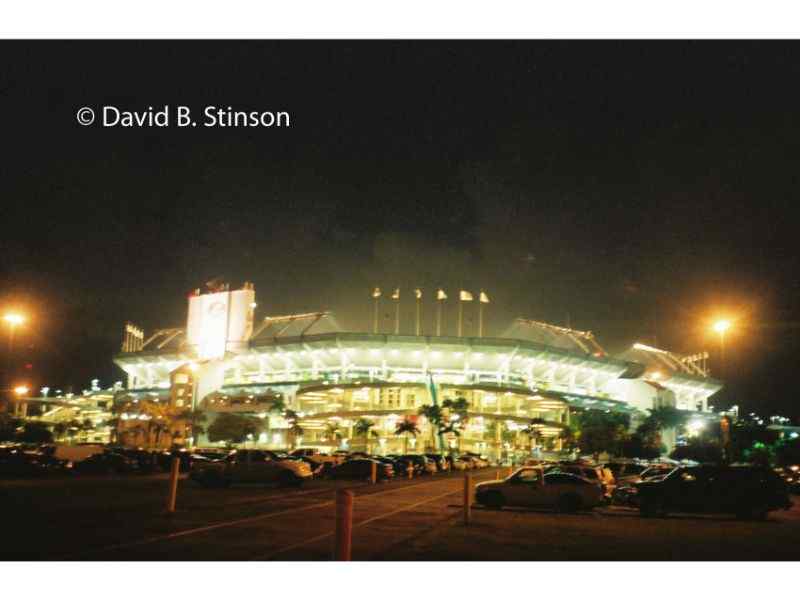
The Florida Marlins began as an expansion team, playing their first season at what was then Joe Robbie Stadium in 1993. Within four years, in 1997, the team brought a World Series championship to Miami, and a second one in 2003. Thus, in the less than 20 years that the expansion Florida Marlins called Sun Life Stadium their home, the team won two more World Series at their home ballpark than the Chicago Cubs have won in their 100 seasons at Wrigley Field.
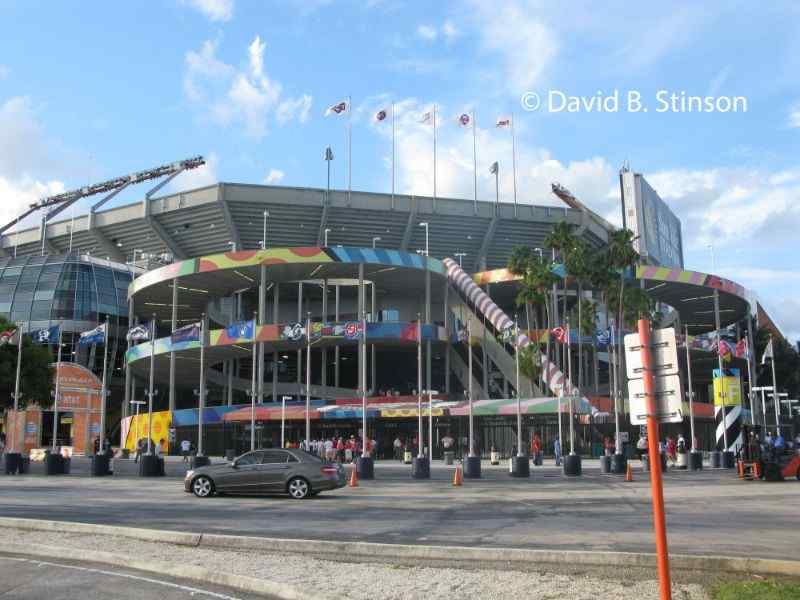
Sun Life Stadium is primarily a concrete structure, architecturally lacking a certain je ne sais quoi.
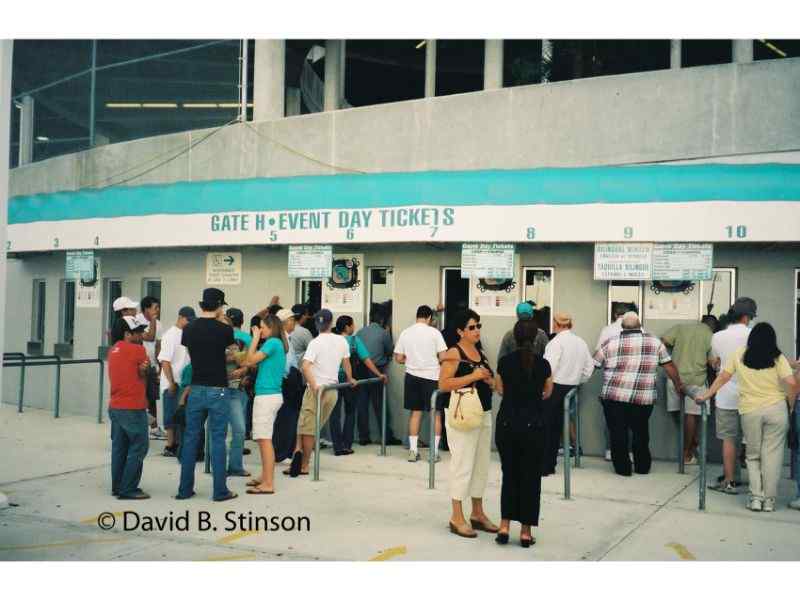
However, inside the ballpark, the bright orange seats and expansive green field give the ballpark a somewhat festive look.
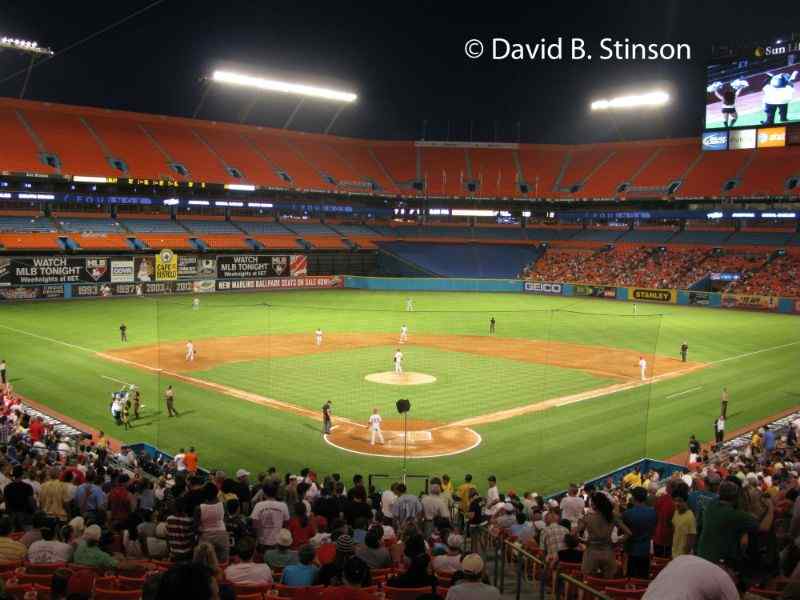
Entrance to the seating bowl offers fans a vivid color display of aqua blue, leading to bright orange.
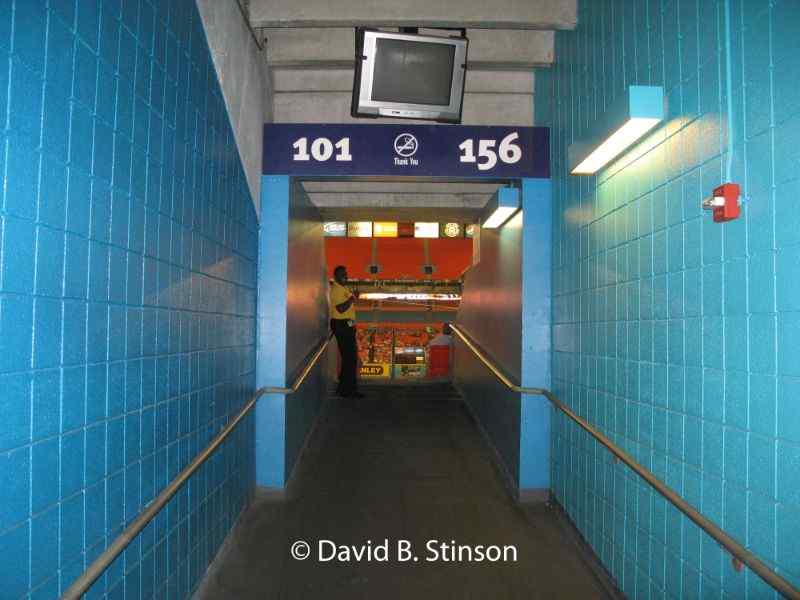
Attendance at Marlins home games often was so abysmal that the team closed off to fans the upper deck seating.
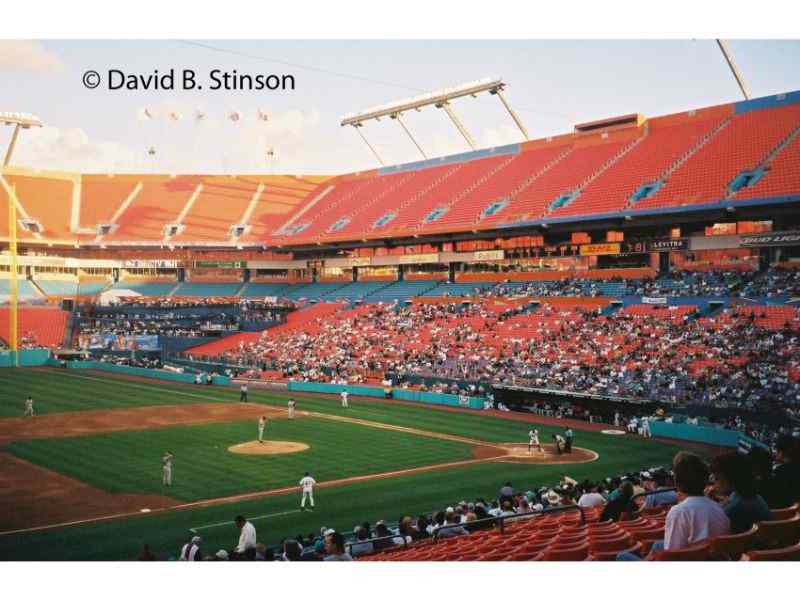
Because the ballpark was adapted for baseball, the batters eye at Sun Life Stadium was made up of blue vinyl covering the seating directly behind dead-center field.
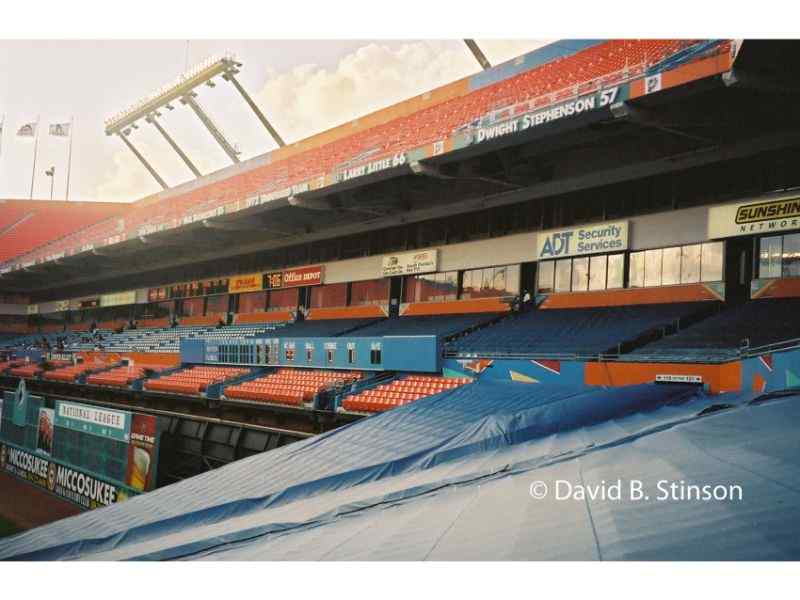
One other quirk of staging baseball in a football arena was the lack of a center field scoreboard. Two main video scoreboards were placed at opposite ends of the stadium along the third base side and right field (the two end zones for football games).
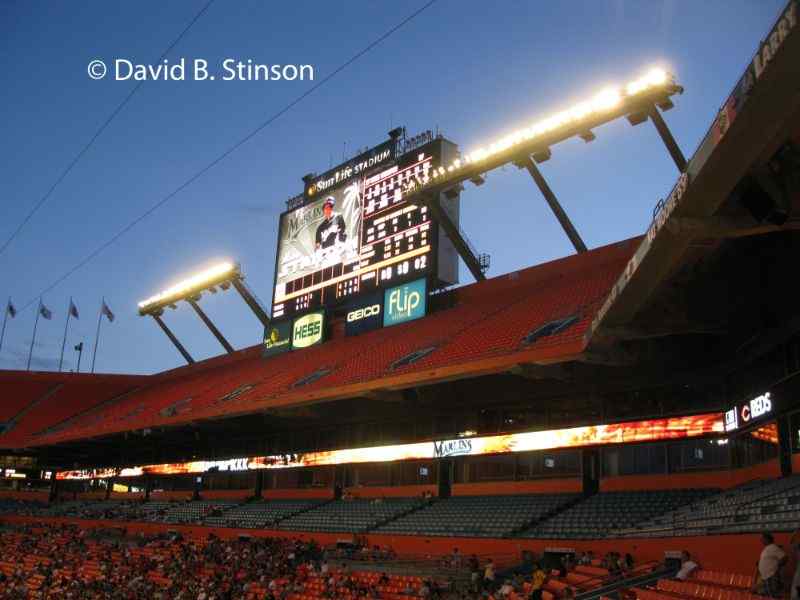
The rectangular configuration of the stadium did allow fans the opportunity to walk entirely around the field and take in the game from every vantage point, including center field.

The Dolphin’s orange seating throughout the stadium is adorned at the end of each row with the Dolphin’s logo.
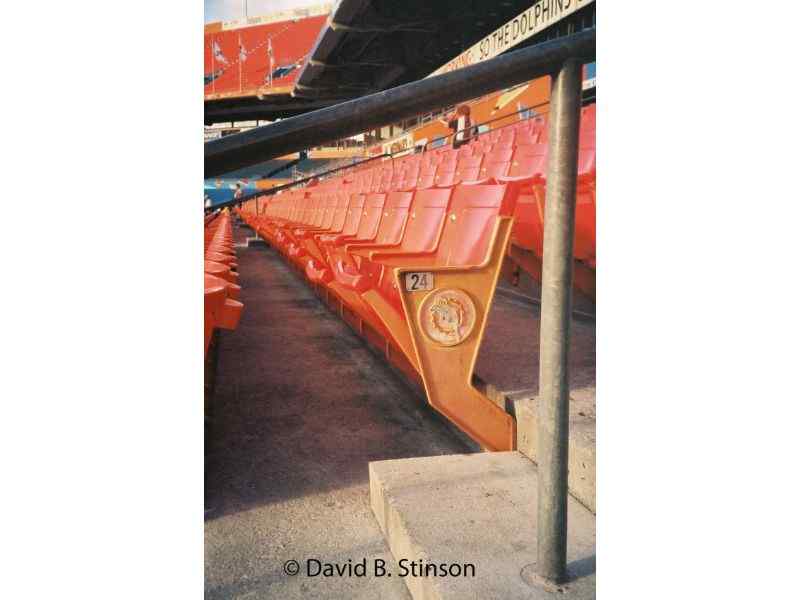
The home team and away team bullpens were located out of play along the first base and third base foul lines.
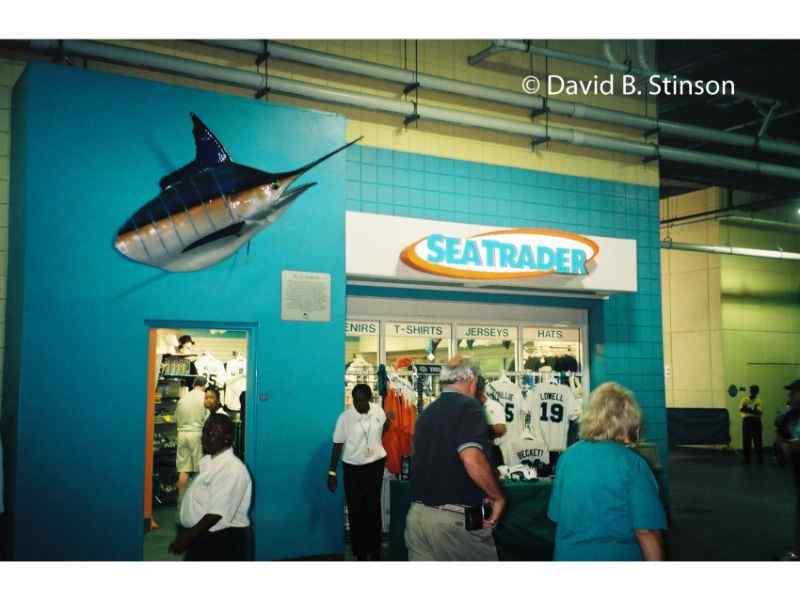
File under the moniker “truly out of place” – in no major league ballpark other than Miami, Florida, would you see cheerleaders.

The team offices, located in the bowels of the ballpark included a Marlins Hall of Fame display and one really big taxidermy fish.
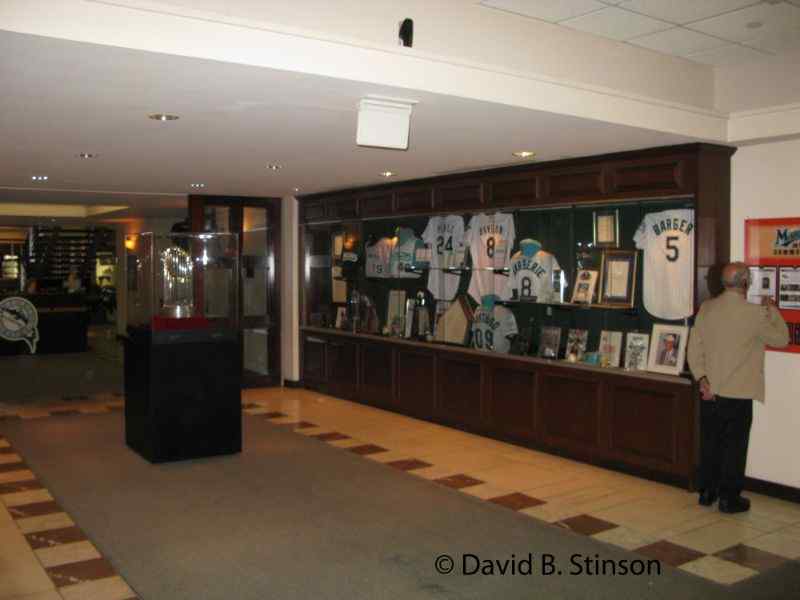
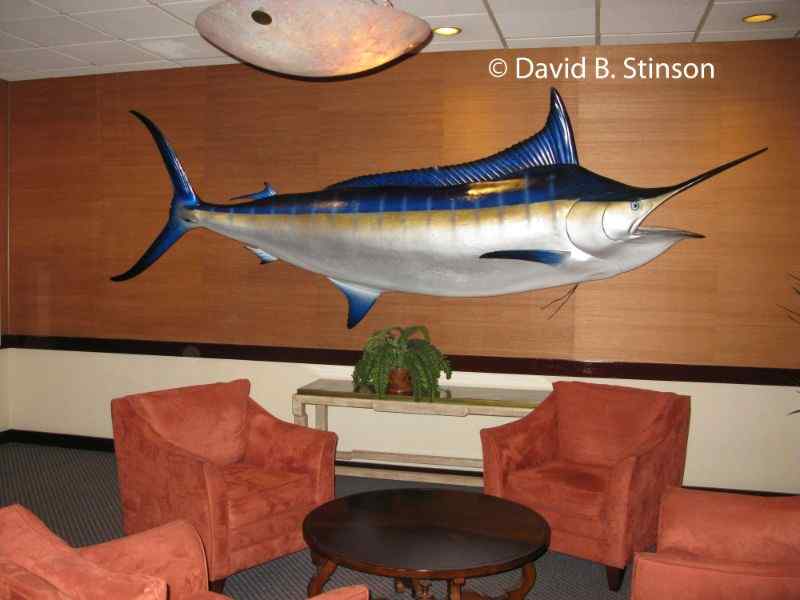
As a daily reminder that things could only get better, the administrative offices’ reception room included a clock counting down the number of days until the Marlins moved to a new, retractable-roof ballpark.
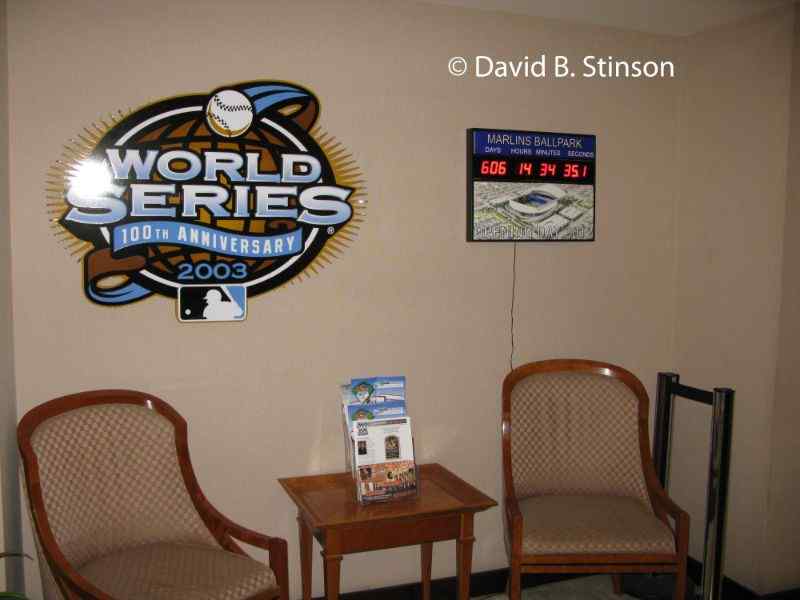
The new ballpark, which opened in 2012 (and which I have yet to visit and photograph), is built on the site of the Orange Bowl, an 80,000 seat stadium that once was home to the National Football League Miami Dolphins, the Orange Bowl Classic, and the University of Miami Football Team.
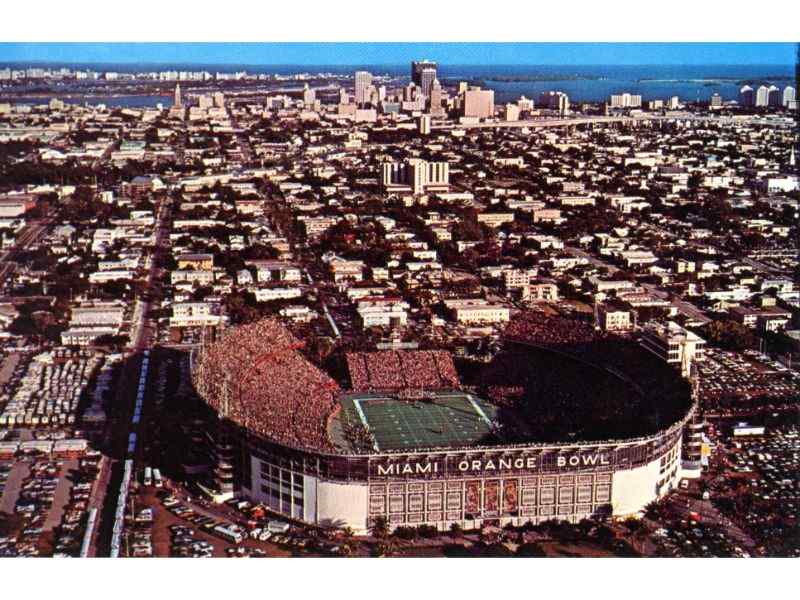
Sun Life Stadium is not a lost ballpark, and with plans to renovate the stadium apparently in the works, the good news is it appears the ballpark will be around for years to come. It currently is one of only seven former major league baseball stadiums still in existence (L.A. Coliseum, Qualcomm Stadium, RFK Stadium, Metrodome (slated for demolition), Candlestick Park (slated for demolition), Astrodome (future uncertain). Before too long, it will be one of only four. [EDITOR’S NOTE: Since publication of this blog post, Qualcomm Stadium, the Metrodome, and Candlestick Park all were demolished].
